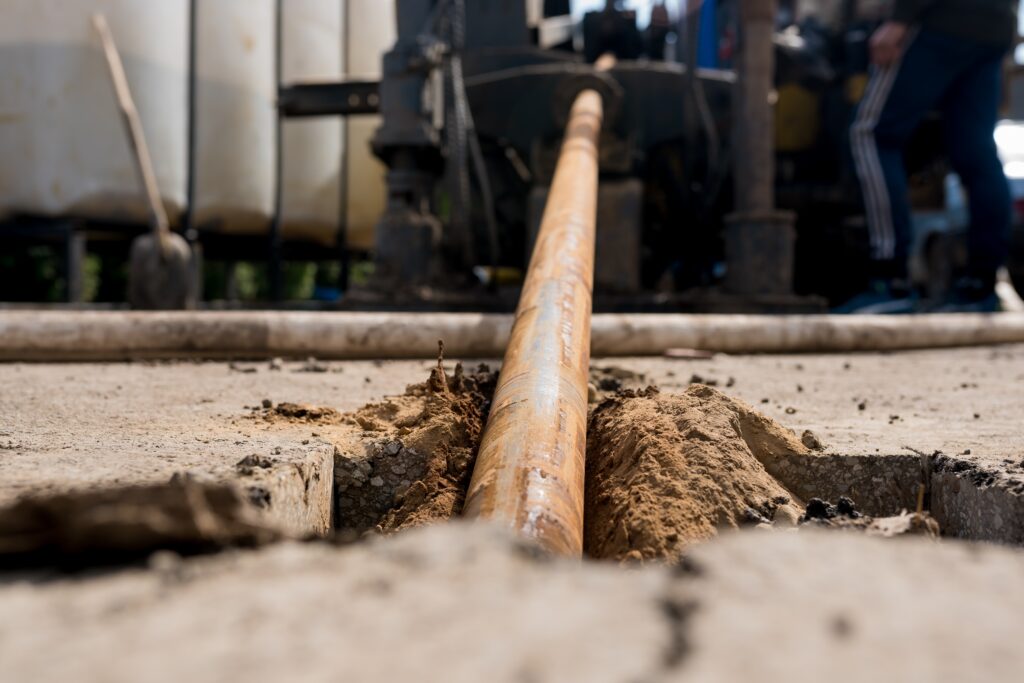
With significantly more screen per well and the flexibility to be installed in hard-to-reach places, horizontal remediation wells provide maximum efficiency in NAPL recovery.
The more contaminated sites tend to have the presence of non-aqueous phase liquids (NAPL) and require free product removal and recovery. When activating a capture well, whether for free product collection or groundwater control, we’re more than likely looking to capture as much volume as possible. Through their orientation and increased screen footage per well, horizontal remediation wells offer the opportunity to capture significantly more volume compared to traditional vertical alternatives.
NAPL, or free product, exists as a separate phase from the groundwater it is interacting with. Less dense NAPL, or LNAPL, rises to the top of the groundwater interface and creates a thick barrier between the vadose zone and the saturated zone. Denser NAPL, or DNAPL, will sink through the groundwater and pool on top of the next impermeable layer. Gravity is then the primary force that drives migration of the DNAPL, meaning it can travel in the opposite direction of the groundwater flow if the lithologic layers are oriented in a conflicting direction. Either way, NAPL plumes tend to be more laterally extensive than vertically thick.
It is for this reason that horizontal remediation wells are the logical option for free product removal and recovery. Due to the orientation of vertical wells being installed perpendicular to the thickness of the NAPL, only a few linear feet of screen are typically in contact with the free product per well. It may take several vertical wells to recover the desired amount of NAPL. In vertical well situations, even more screen footage is in direct contact with the groundwater, meaning more groundwater is being captured per well compared to NAPL, slowing down the recovery process.
Horizontal recovery wells can be installed parallel to the NAPL plumes, following the exact orientation of the free product whether it is LNAPL or DNAPL. One horizontal well can put hundreds of feet of screen in direct contact with the target-free product zone. As a result, significantly more NAPL is recovered in less time. Since the horizontal remediation well is installed directly within the NAPL plume, the proportion of free product recovered is significantly higher than groundwater.
Through horizontal directional drilling techniques, horizontal remediation wells can be installed directly in line with the NAPL plume. As a result, horizontal wells provide more free product removal and recovery to reduce site contaminants and keep the remedial timeline on track.
77 N. Plains Industrial Road
Wallingford, CT 06492
Over 5,000 Horizontal Remediation Wells Installed Worldwide
NAICS Codes: 237990 Heavy Equipment & Horizontal Drilling • 237110 Water & Sewer Line and Related • 541620 Environmental Consulting Services for HRW Screen Design • 237130 Underground Cable Lying & Utility Line Construction
Copyright 2025 Directional Technologies, Inc. All Rights Reserved.